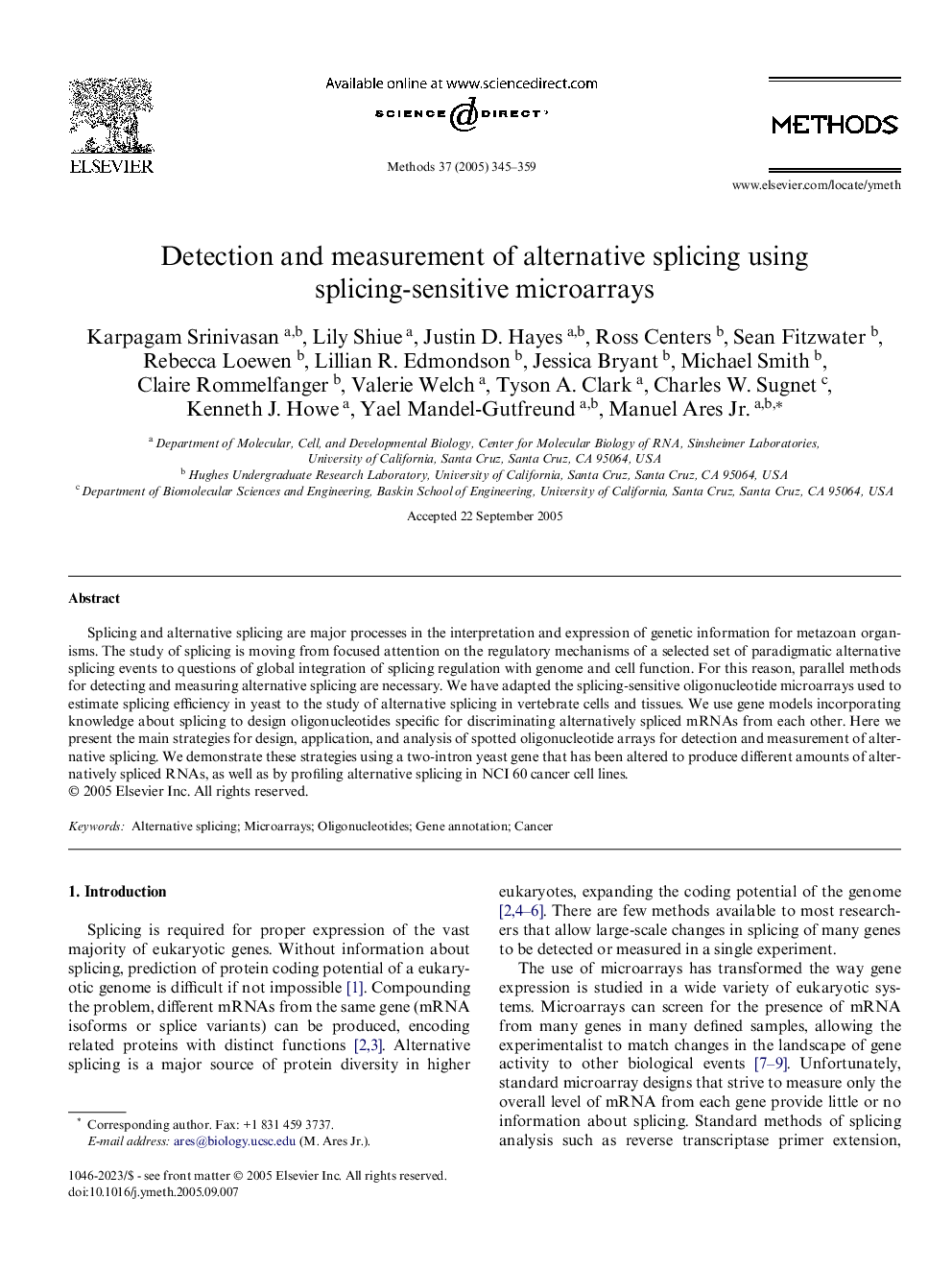| Article ID | Journal | Published Year | Pages | File Type |
|---|---|---|---|---|
| 10826604 | Methods | 2005 | 15 Pages |
Abstract
Splicing and alternative splicing are major processes in the interpretation and expression of genetic information for metazoan organisms. The study of splicing is moving from focused attention on the regulatory mechanisms of a selected set of paradigmatic alternative splicing events to questions of global integration of splicing regulation with genome and cell function. For this reason, parallel methods for detecting and measuring alternative splicing are necessary. We have adapted the splicing-sensitive oligonucleotide microarrays used to estimate splicing efficiency in yeast to the study of alternative splicing in vertebrate cells and tissues. We use gene models incorporating knowledge about splicing to design oligonucleotides specific for discriminating alternatively spliced mRNAs from each other. Here we present the main strategies for design, application, and analysis of spotted oligonucleotide arrays for detection and measurement of alternative splicing. We demonstrate these strategies using a two-intron yeast gene that has been altered to produce different amounts of alternatively spliced RNAs, as well as by profiling alternative splicing in NCI 60 cancer cell lines.
Related Topics
Life Sciences
Biochemistry, Genetics and Molecular Biology
Biochemistry
Authors
Karpagam Srinivasan, Lily Shiue, Justin D. Hayes, Ross Centers, Sean Fitzwater, Rebecca Loewen, Lillian R. Edmondson, Jessica Bryant, Michael Smith, Claire Rommelfanger, Valerie Welch, Tyson A. Clark, Charles W. Sugnet, Kenneth J. Howe,
